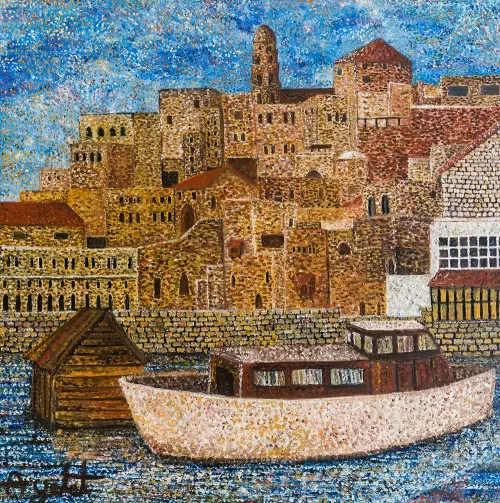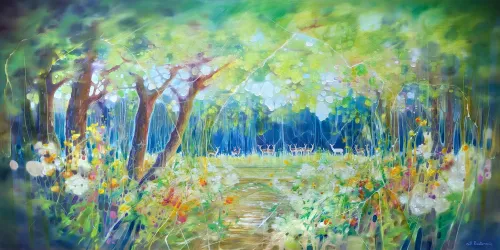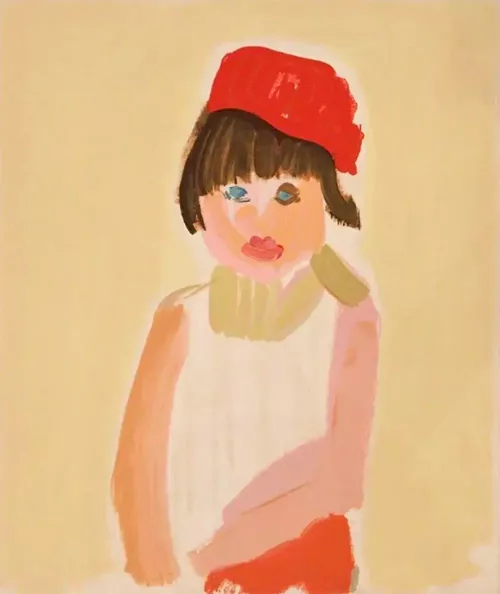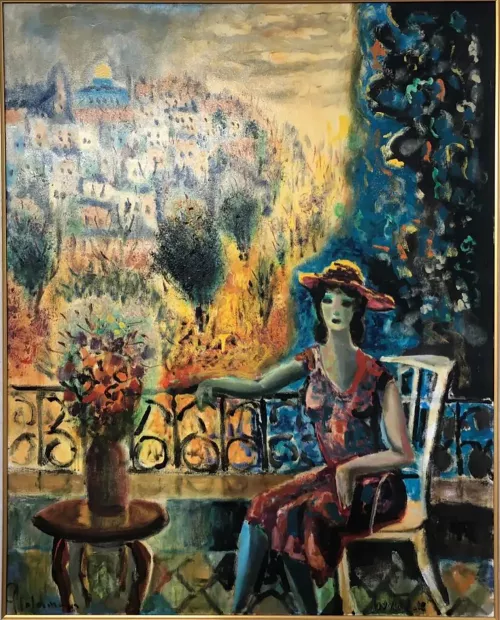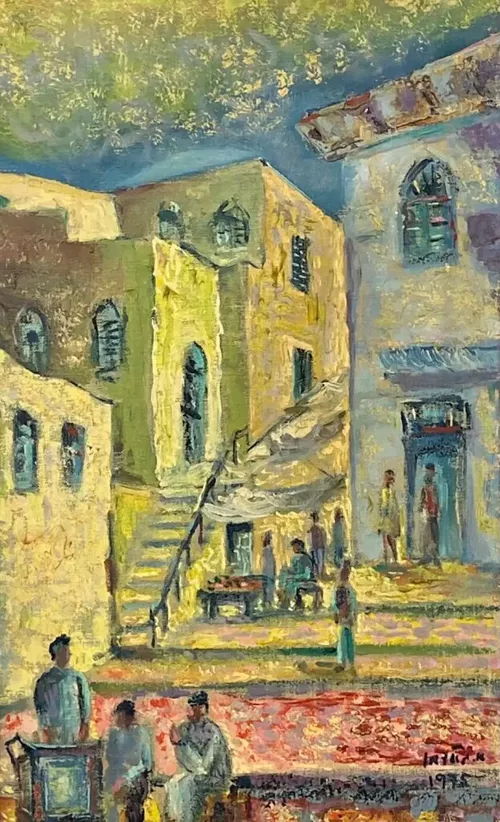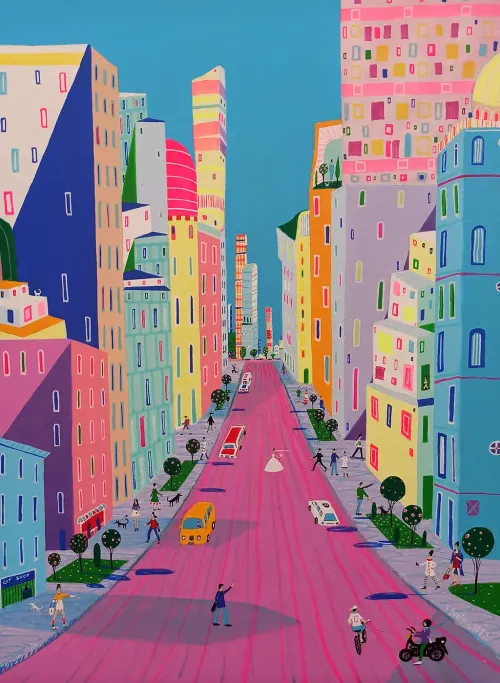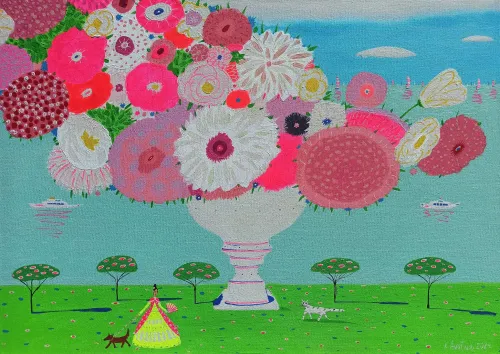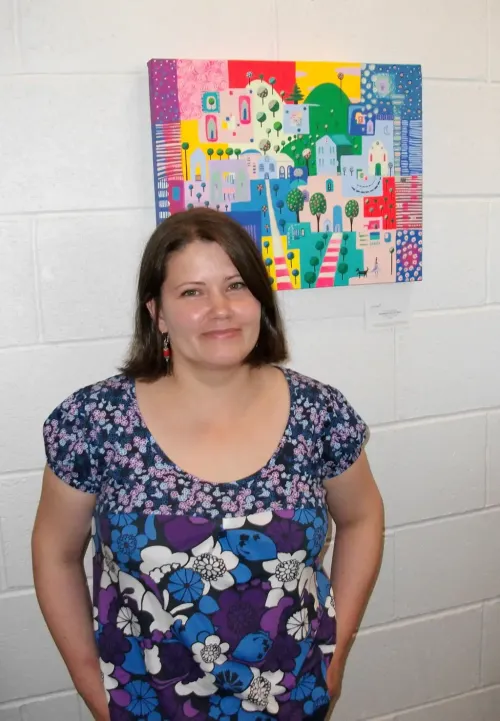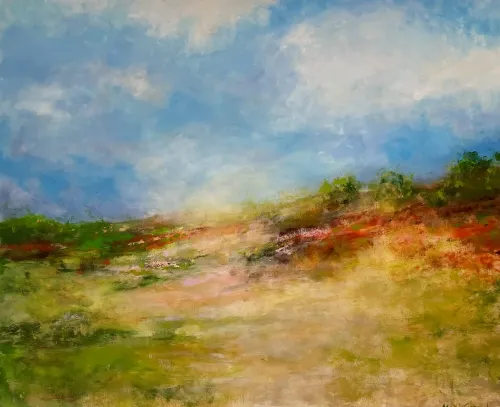Urban Echoes Painting
, 1960
"Urban Echoes" by Igael Tumarkin combines vibrant green tones with intricate collage elements, blending industrial and abstract forms to create a visually dynamic and thought-provoking piece.
"Urban Echoes" is a striking artwork by Igael Tumarkin, measuring 30 x 40 cm. This piece features a vibrant green color palette, interspersed with various collaged elements that include industrial motifs, textual fragments, and abstract forms. The central focus includes an intricately detailed compass, a "STOP" sign, and various mechanical components, creating a layered and textured composition.
The lighting is even, allowing the bold colors and intricate details to stand out. The style is influenced by Abstract Expressionism and Pop Art, with strong hints of Surrealism and Dadaism, characteristic of Tumarkin's work. The mood is energetic and contemplative, inviting viewers to delve into the complexities of urban life and industrialization.
This painting would make a captivating addition to a modern living room or office, where its vibrant colors and intricate details can be appreciated and spark conversation.
Global delivery managed by our logistics specialists.
Shipping costs, duties, and taxes are not covered in the price.
14-day no-cost return policy (excluding custom-made items).
Track your order using a tracking link sent to your email.
Your order is fully secured against any damage or loss.
Return Policy: 14-day free returns.
Returns are accepted within 14 days. WeArt is fully committed to customer satisfaction: you have 14 days to return an original work. The work must be returned to the artist in perfect condition, in its original packaging. All eligible items can be returned (unless otherwise indicated).
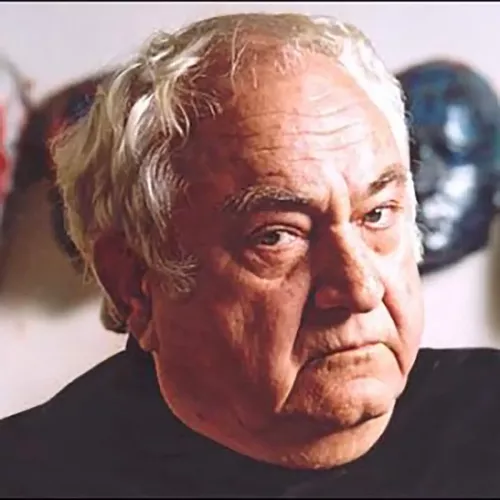
Biography
Igael Tumarkin's unique assemblage style and diverse spatial compositions earned him international acclaim and numerous awards, including the Israel Prize, making him a key figure in Israeli art.
Igael Tumarkin was a prominent Israeli painter and sculptor. Born in Germany, he immigrated to Israel in 1935. In the 1950s, Tumarkin studied painting and sculpture in Ein Hod under the sculptor Rudi Lehmann, deeply influenced by Dadaism and other European art movements.
Early in his career, Tumarkin developed a distinctive style incorporating assemblage, gaining international recognition. In the 1970s, he shifted to different spatial compositions. Alongside his painting, Tumarkin created hundreds of sculptures, many of which are displayed in prominent locations in Israel and around the world.
Throughout his long career, Tumarkin received numerous awards, including the Israel Prize in 2004. His works are part of many private and public collections globally.

























































































































































































































































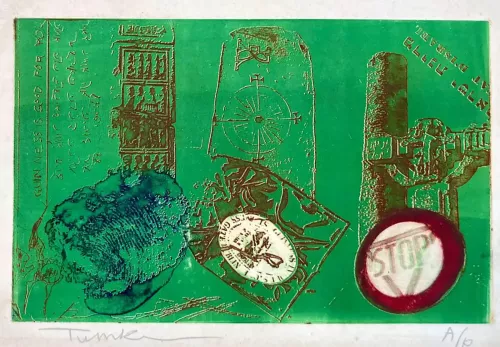







 in artwork
in artwork
 in artwork
in artwork













